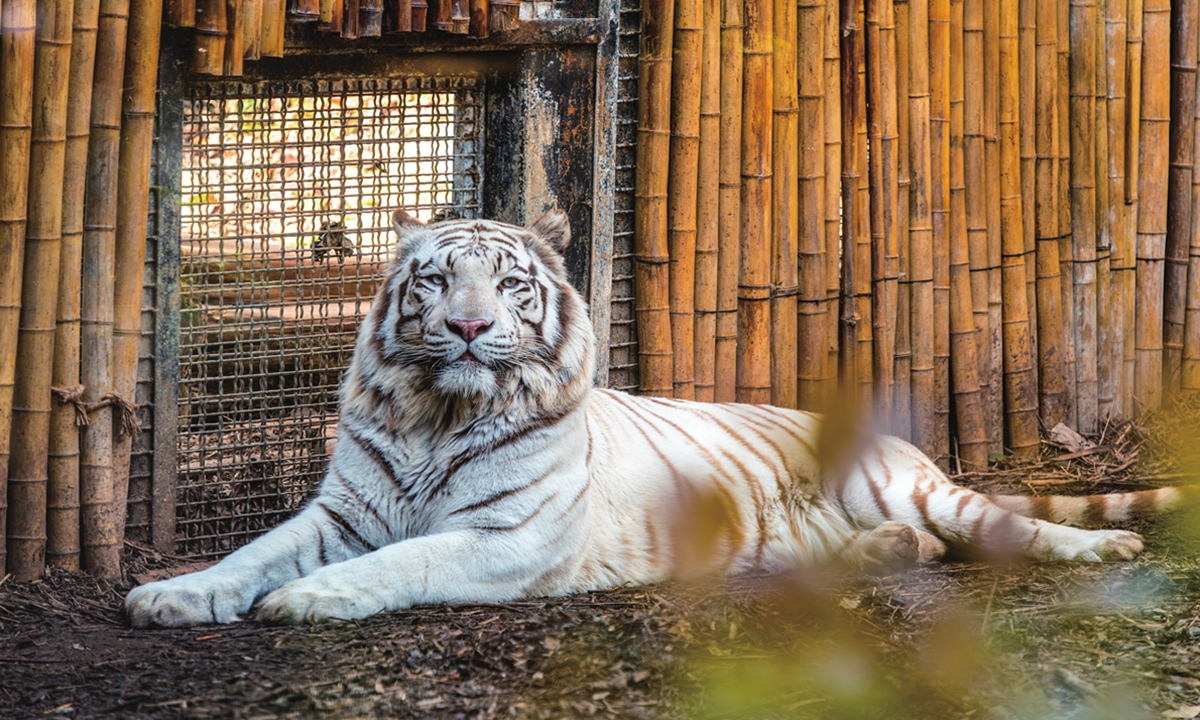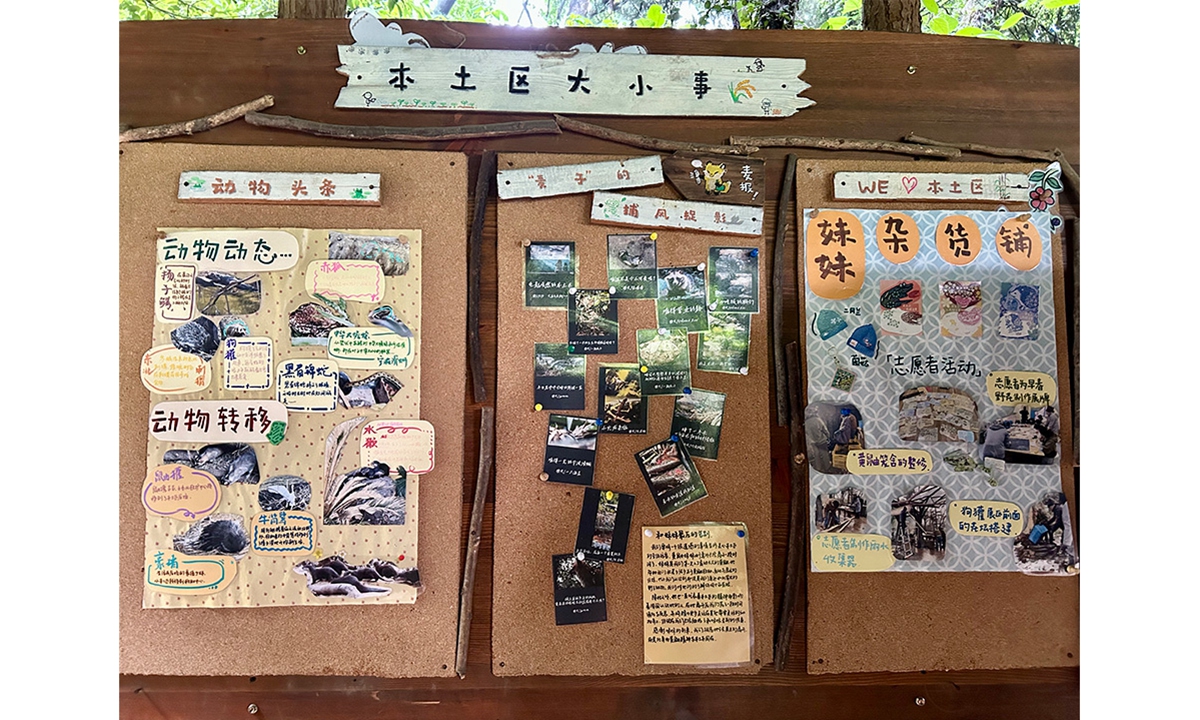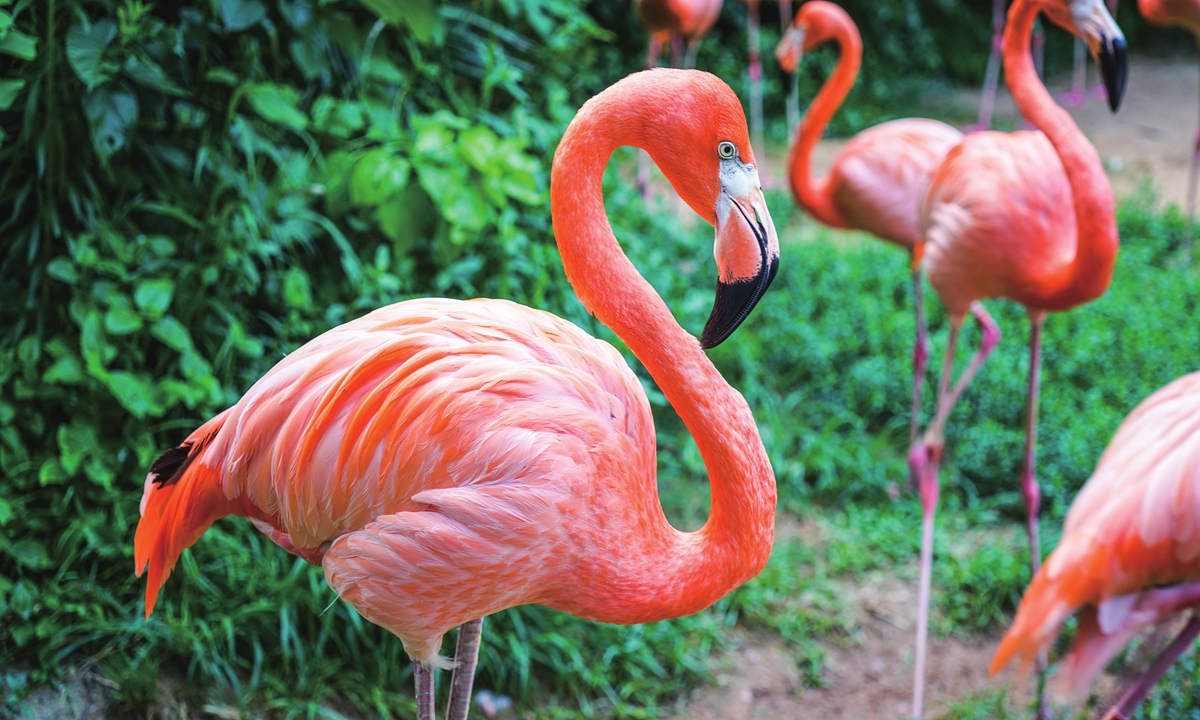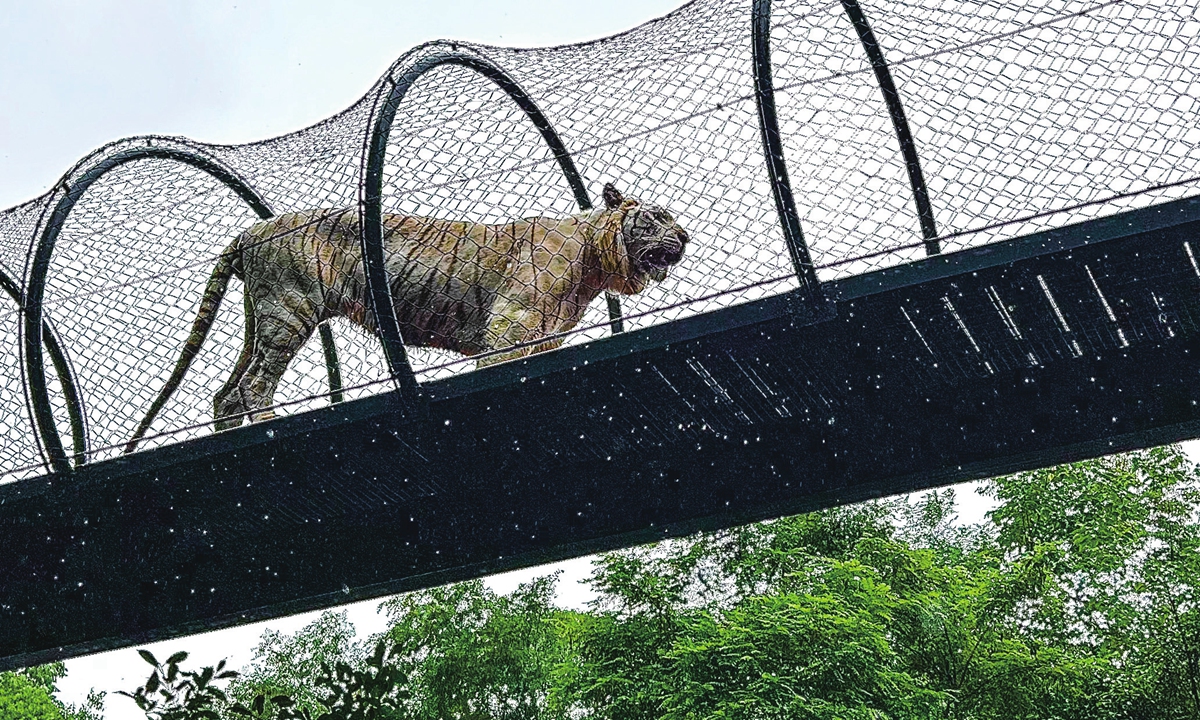Nanjing's Hongshan Forest Zoo, East China's Jiangsu Province, has become a real hit and has been dubbed "the Disneyland of Nanjing" for its popularity and the number of visitors it attracts. Here visitors can enjoy learning about nature and the fascinating relationship between human beings and animals. Located north to the old Nanjing railway station in the heart of the city, the zoo possesses a significant advantage with its hilly topography: it can simulate the natural habitat of wild animals, allowing them to have more space to move around, while remaining conveniently accessible.

A tiger is seen in the Hongshan Forest Zoo in Nanjing, East China's Jiangsu Province. Photo: VCG
On a rainy day, the zoo was quieter and less crowded than usual, providing the Global Times reporter with the chance to explore animal tracks, take time to read the fun placards and ask the guides about animal behavior and amusing anecdotes.
Shanghai resident Wang Yitong, who purchased an annual ticket for 80 yuan ($11), found it to be a worthwhile investment, considering it was her fourth visit in six months, compared to the standard adult fare of 40 yuan.

Latest news of animals and volunteer events can be seen on a bulletin board in the native species area of Hongshan Forest Zoo in Nanjing, East China's Jiangsu Province. Photo: Zhang Han/GT
For Wang, Hongshan is a unique zoo, which stands out by providing an environment that allows the animals to exhibit their natural behavior. Food is put in paper bags or baskets for "big cats" like tigers to mimic the predation process. Areas for lizards, birds and monkeys are interconnected just like a real South American forest where animal families live together happily.
Wang did not see a single wolf during her latest visit, as they sought shelter from the rain, however, she found the zoo's placards describing the wolf family very informative and she appreciated the photo wall where visitors could add their photos.
According to another visitor named Qin, a tour in Hongshan Zoo is not just seeing animals.
As mother of a two-year-old, Qin observed her child learning to quietly observe animals without disturbing them, aided by signs written from the animals' perspective.
"The free guided tours and the introduction boards are very informative and well designed," Qin told the Global Times, adding: "Despite the fact I had already seen many different species is animals in the past, I have learned a lot more about them since I started visiting the zoo with my child."
In the native species zone of the Hongshan zoo, an in-situ conservation site, common animals like yellow weasels, hedgehogs and the rarer otters are well cared for and represent the biodiversity of China.
In this area, what people first see is not any animals, but farmlands, ponds and wetlands, rural shanties, bushes…which the animals share with people. This kind of setting leaves visitors a sense of harmonious coexistence between animals and humans.
Chinese people have read about "Cha," a dog-like animal the famous writer Lu Xun wrote in a piece about his hometown in the Yangtze delta, yet few of them know "Cha" is actually the Eurasian badger which is distributed in various regions of China.

Flamingoes are seen in the Hongshan Forest Zoo in Nanjing, East China's Jiangsu Province. Photo: VCG
A yellow weasel named Mei Mei, or literally little sister, died of accident and an obituary for her is put on the bulletin board at the entrance of the native species zone along with announcement of newborns, latest pictures of different animals, and volunteer events.
Wang likes the bulletin board very much as "it is a bond that make us and the animals like one family." Reading the obituary is sad, but it also prompted people to think of her death, and memorize her like a family member.
But Zoo staff member Chen Yuelong disagrees: he believes that wounded animals should not be given names as ultimately they had better return to nature.
Despite differing philosophies, both Wang and Chen share the goal of achieving a better balance between humans and nature at Hongshan.
Wang is about to participate in Hongshan's wildlife event next week, during which she will follow a guide to observe nocturnal animals, overlooked plants and insects, while camping overnight among the growls and chirps of the surrounding creatures.
"It must be amazing," Wang said with excitement.

A tiger walks on the overhead ecological corridor in Hongshan Forest Zoo in Nanjing, East China's Jiangsu Province on May 27, 2024. Photo: Zhang Han/GT
Data shows that roughly 60 percent of Hongshan Zoo visitors are young people in their 20s and 30s. Wang, 30, is one of them and has paid 40 yuan for a ticket and later spent 400 yuan in souvenirs.
Despite maintaining the same entry fare for more than 10 years, the zoo has developed over 400 kinds of cultural and creative products, such as stuffed animals, magnets, scarfs, postcards and handbags which, although slightly overpriced, are a big hit with visitors, who are more than willing to depart with a little money to support the welfare of the animals.
Some visitors return to see specific "star animals" - golden face saki "Du Du," snub-nosed monkey "Rui Rui," or giant panda "He He."
Initially drawn by the zoo's popularity as a must-see destination in Nanjing, many tourists are pleasantly surprised by an experience that exceeds their expectations and come again and again or end up with an annual card.







